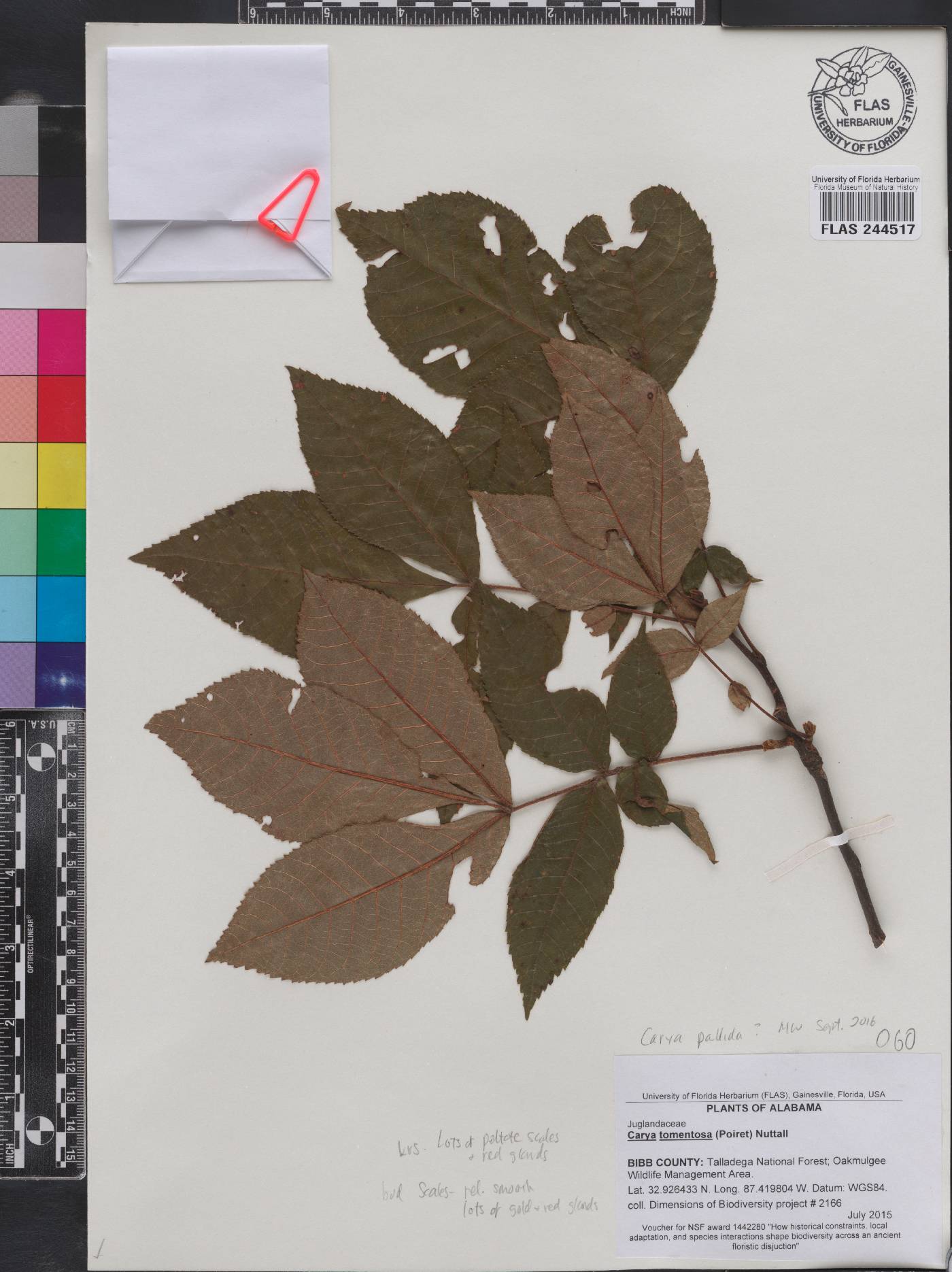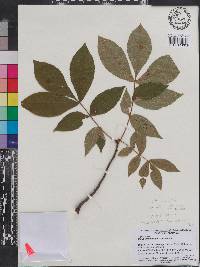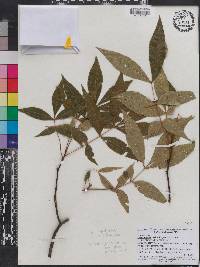|
|
|
|
Family: Juglandaceae
sand hickory
[Hicoria pallida Ashe] |
Trees , to 29 m. Bark dark gray, ridged, often deeply furrowed. Twigs reddish brown, slender, slightly scaly, sometimes pubescent. Terminal buds reddish brown, ovoid, 4-11 mm, sparsely to densely scaly; outer bud scales with coarse hairs on midribs, bud scales imbricate; axillary buds protected by bracteoles fused into hood. Leaves 3-6 dm; petiole 3-10 cm, rachis sparingly hirsute near base, densely hirsute and scaly distally. Leaflets (5-)7(-9), lateral petiolules 0-1 mm, terminal petiolules 2-5 mm; blades ovate to obovate or elliptic, not falcate, 2-15 × 1-6 cm, margins finely to coarsely serrate, apex acuminate; surfaces abaxially hirsute toward base of midrib, otherwise without hairs or rarely hirsute with unicellular and 2-8-rayed fasciculate hairs, abundant large peltate scales and small 4-lobed, irregular, and round peltate scales imparting silvery tan color, adaxially glabrous except for dense fasciculate hairs at base near leaf insertions, moderately to densely scaly in spring. Staminate catkins pedunculate, to 13 cm, stalks hirsute, scaly, bracts scaly, hirsute at apex; anthers hirsute. Fruits tan to reddish brown, obovoid to spheric or ellipsoid, slightly compressed, 3-4 × 2-3 cm; husks rough, 2-4 mm thick, dehiscing to middle or base, sutures smooth; nuts tan, obovoid to spheric or ellipsoid, slightly compressed, not angled, rugulose; shells thick. Seeds sweet. Flowering spring. Well-drained sandy or rocky soils on bluffs, ridges, rolling hills, and dry woods; 0-500 m; Ala., Ark., Del., Fla., Ga., Ill., Ind., Ky., La., Md., Miss., Mo., N.J., N.C., S.C., Tenn., Va. Carya pallida occurs principally east of the Mississippi River. It seems to intergrade with C . texana in eastern Missouri and southern Illinois, and it may hybridize with C . glabra .
Bark rough, deeply furrowed; buds 5-8 mm, densely covered with resinous, yellowish scales; petiole, rachis, and lower side of the principal veins copiously, loosely, and ±persistently pubescent with fascicled hairs; lfls 7(9), pale beneath, densely scurfy when young, nearly glabrous on the actual surface at maturity; fr ellipsoid to obovoid or subglobose, 2-4 cm, densely resinous, eventually splitting to the base along some of the sutures; nut white, compressed, nearly round, prominently angled; kernel edible. Moist or dry soil; Fla. to La., n. to Ark., s. Ill., Ky., and Va., and on the coastal plain to s. N.J. Gleason, Henry A. & Cronquist, Arthur J. 1991. Manual of vascular plants of northeastern United States and adjacent Canada. lxxv + 910 pp. ©The New York Botanical Garden. All rights reserved. Used by permission. |




